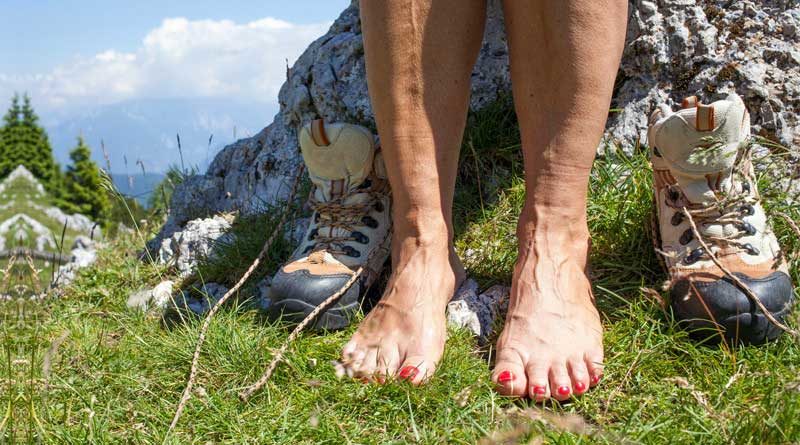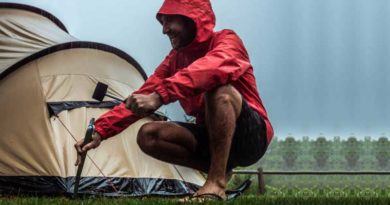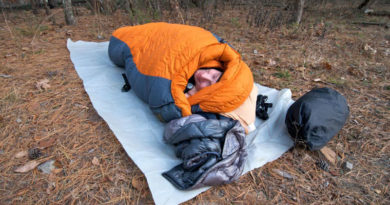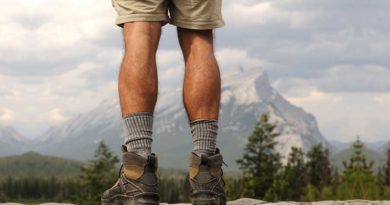Why Do Hands and Feet Swell When Hiking?
There has long been a myth and discussion surrounding whether or not hiking can cause your hands and feet to swell, and what about hiking causes the swelling. As a hiker, you may have experienced this yourself! You’ll get halfway through your hike and realize that your wedding wing feels tighter or that your skin feels taut. Your arms may feel bloated, your fingers will look enormous, and you are left wondering – what in the world is going on?
There is a lot of information available on the internet that discusses why your extremities may experience swelling while you are hiking. However, it is important to note that a great deal of this information is incredibly flawed. In nearly all cases, you are not experiencing some fatal condition that is causing your hands and feet to swell. Like most things, there is a much more logical, less severe, and less dramatic cause to what you are experiencing on your hikes. Let’s take a look at what could be causing you to swell.
Why Are Your Hands Swelling?
There are a few factors that can contribute to swelling in the hands and fingers during a hike. Nearly all of them are simple and cause no lasting conditions or cause for concern. It happens to most hikers and is entirely normal and reversible. Your hands will not look like balloons that are ready to pop indefinitely.
One significant factor to hand swelling during hiking is decreased blood flow. Engaging in intense and strenuous exercising and activities, such as hiking, increases the blood flow to your muscles, heart, and lungs. This increase in blood flow to your vital organs causes a decrease in blood flow to your hands and feet. This reduction, in addition to the body’s increased temperature from the physical activity, causes the blood vessels to dilate and move towards the surface of the skin, which causes swelling. This is the cause in nearly all cases of swelling during a hike in those that are in good health.
A few other external factors that can contribute to hiking are usually easy to avoid. For example, outdoor allergies can lead to a reaction that causes swelling to the hands, feet, and other areas of the body. While allergies can be caused by pollutants and allergens found within the air, it is also possible to come into contact with them on the ground in the form of poison oak, poison ivy, and sumac.
What you are wearing can cause swelling, as well. Backpacks put pressure on the shoulders, which can affect how the arms circulate their blood supply. This is a common source of swelling for hikers as they are usually wearing some form of equipment strapped to their backs. Jewelry is also another cause of the swelling. Wearing tight watches, rings, bracelets, and other pieces on the wrist, hands, and fingers can make the symptoms associated with swelling much more noticeable.
Why Are Your Feet Swelling?
One very significant explanation for feet swelling during a hike relates to enlarged blood vessels in the feet. As you hike, your blood vessels increase in diameter. This occurs so that your body can allocate more blood and oxygen to your muscles, which is much needed during a hike. When this occurs, there is sometimes a watery fluid that escapes from the bloodstream. As this fluid fills into the tissue spaces in your toes and ankles, you experience swelling. This fluid accumulation is referred to as peripheral edema, and while the name sounds scary, it is actually a very normal process.
Hyponatremia is a much less common cause of swelling. However, it can be dangerous – here is what you can do. Hyponatremia is a condition that occurs when the sodium levels within your body drop too low. Sodium helps your body absorb water, so if you don’t have enough to absorb your fluid intake, it can cause the body to swell. Other symptoms include headaches, moodiness, confusion, nausea, vomiting, and muscle weakness or cramps. The best way to combat this condition is by munching on plenty of salty, healthy snacks throughout your hike.
Overworked muscles and gear that isn’t fitted properly are two other very common causes for feet swelling during a hike. If you aren’t used to the level of activity required during a hike, your leg, and feet muscles are susceptible to tiny micro-injuries that you may not be able to feel but can cause swelling. The body has this response as a way to protect your muscles. Gear that is worn too tight can restrict the blood flow throughout your body. Anything that puts a significant amount of pressure on your blood vessels can cause your blood flow to become trapped, which will result in swelling.
So…What Can You Do?
One of the easiest and most effective ways to keep yourself from having swollen hands and feet on a hike is by using trekking poles. They can add a lot of safety, support, and protection to your hike without causing too much extra weight. Trekking poles can help prevent swelling and injuries, and they tend to make hikes easier – especially for beginners who may need a bit more stability on the uneven terrain.
Another easy way to ensure that you don’t swell too much during your hike is by making sure that your gear is put on properly. Straps, boots, socks, anything that is too tight against the skin or causes excessive squeezing can impact how easily your blood can move throughout the body, which will inevitably result in swelling.
As always, it is important to drink plenty of water during your hike. This will ensure that your body is properly hydrated. When you are consuming enough fluids, electrolytes, and snacks, your body is in better shape to take on a strenuous hike.




